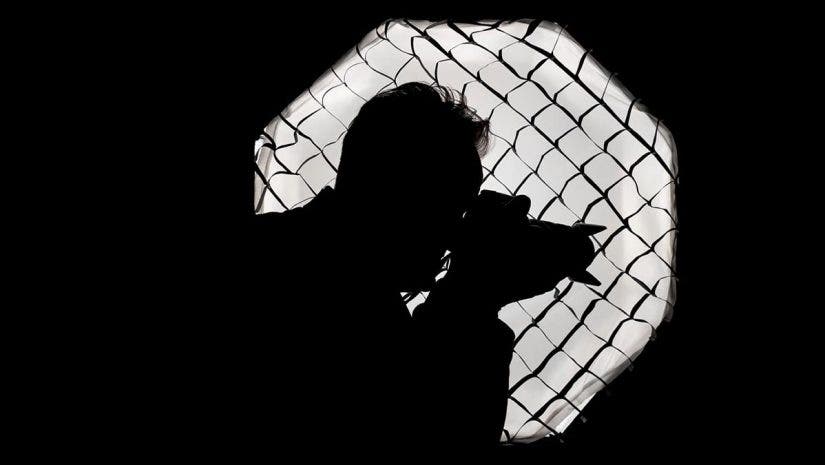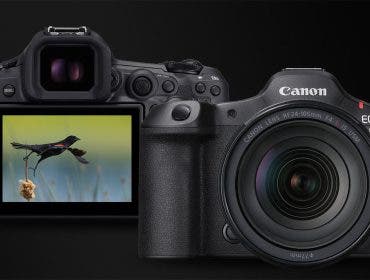Great light leads to great images, and one of the best ways to create great light is by using an artificial light source. There are hundreds if not thousands, of lights on the market today that come in all shapes and sizes with numerous features to ultimately accomplish one goal: create great light. Regardless of what kind of light fixture you purchase, a softbox is a must-have accessory that comes in handy with just about any light. While some lights come with a softbox, others require purchasing one separately. Regardless, it’s an item you need to have, and we’ll tell cover all the softbox basics in this article.
The Basics, What is a Softbox?
Let’s start with the true basics, a softbox is an accessory for lighting that helps create softer, more diffused light. Without a softbox, even the most high-quality lights can produce very harsh lighting, making it difficult to capture evenly lit images. Softboxes come in all different shapes and sizes, but their function remains constant. Ultimately, a softbox is a light modifier that allows you to diffuse light for more even illumination of your subject and control the light’s direction. Many softboxes even come with different openings, allowing you to further control the light and even create special effects with your light.

The Basics, How to Use a Softbox
First, put your softbox on the light. Most softboxes themselves are not brand or system-specific, but rather, they use a device called a speed ring to attach to your light. That’s because every lighting brand has different attachments, and speeding is the key to easily attaching your light softbox. You’ll then need to properly position the light and softbox to hit your subject. The general rule of thumb is to put the softbox at a 45-degree angle from your subject for the best light, but feel free to test out other combinations for different effects.
Next, adjust the power of your light. Once the softbox is on, you may find that you need to increase the intensity of the light. Moving the softbox closer or further from your subject can also adjust light intensity. Consider using any additional accessories or fine-tuning the softbox to achieve your desired effect. Many softboxes come with other tools you can use to help tune the light to fit your scene perfectly.
One of the most popular softbox accessories is called a grid or egg crate. Usually, these attach to the front of the softbox and look like circles or squares in front of the light. This helps to keep the light directed at just the subject, avoiding too much spillover to the rest of the scene. A grid effectively narrows the spread of your softbox. Additional effects can be applied with other accessories, and the list goes on regarding all the creative effects you can do with a softbox.

What Size Softbox is Best?
The best type of softbox depends on the user, as each size and shape offers different benefits.
Smaller softboxes (2 feet or smaller) are best for macro-photography or any time when you need a high degree of control over your light. These smaller softboxes often produce harsher light than larger softboxes, which can be desirable for some shooters. Medium softboxes (3 feet – 4 feet) will be an excellent choice for most shooters. This size offers excellent light quality and is somewhat portable, making it very versatile for various shooters. Most portrait photographers will find a medium-sized softbox to perfectly suit their needs. Large softboxes (5 feet and larger) are the size of choice for those who need to capture full-body images or multiple subjects in one photo. You’ll commonly see this size softbox in studios where the softbox can be set up and left in one spot.
What Shape of Softbox is Best?
Softboxes come in numerous different shapes, which also affect the light. Rectangular softboxes are commonly used for portraits and product photography due to the long, narrow light source they produce. Additionally, these are usually the best kinds of softboxes to simulate window light. Square softboxes are the jack-of-all-trades of softboxes. This shape provides balanced light that is great for just about any kind of photography or videography. Octagonal-shaped softboxes are generally considered one of the best shapes for portraits, as they provide rounded light in the eyes, which looks very natural.
When picking a softbox shape and size, remember to consider what you need the softbox for and how it fits in your space. If you’re traveling and shooting outdoors frequently, look for a softbox that breaks down and sets up quickly and is more compact. Those shooting in a permanent studio can afford a little larger light as you won’t carry the softbox to all your shoots. If you still aren’t sure which softbox to use, a medium-sized square softbox will be a good choice for anyone needing a softbox.

The Basics, Softbox vs. Umbrellas
Deciding between a softbox and an umbrella to create diffused light can be difficult. Both softboxes and umbrellas are designed to diffuse light, but each does so in a slightly different way, with its own pros and cons.
In most cases, umbrellas are more portable and set up quicker than their softbox counterparts. They also spread light over a larger area, which can be advantageous for capturing numerous subjects or very large spaces. There are also different options for umbrellas, including shoot-through and reflective, which have an effect on the look of the light as it hits the subject. Controlling the light in a smaller area can be difficult, resulting in lots of light spilling over behind your subject when you’re trying to shoot an individual subject or small area.
Softboxes, on the other hand, have far more precise control over the light. Additionally, most softboxes have a more even light spread than umbrellas, resulting in fewer bright hotspots and dark shadows. Many softboxes also come with more accessories to help create different effects with your light.
The choice of softbox or umbrella ultimately comes down to the creator, but most professionals will tell you that each lighting option stands out in its own way, making them both great pieces of equipment.
What Kind of Creator Should Use a Softbox?
Softboxes are great for all kinds of creators who utilize artificial lighting in their scenes. In most scenarios, diffusing the light you are using will produce a more realistic-looking image. Using a softbox allows you to diffuse the light. It gives you more control over the light you’re using to hit your subject more effectively without too much spillover.
That said, a softbox isn’t always necessary, and portrait photographers who want to push their creativity further may play with harsh lighting, with very dark shadows and bright highlights. A softbox is a tool you should have in your kit if you use artificial lighting. Don’t be afraid to get creative and try shooting without it occasionally.

As you can see, a softbox is essential for any creator who uses artificial lighting. Picking the right size and shape of softbox can create vastly different effects, and it just takes time to decide on the look you like best in your own photo or video work. Next time you’re purchasing a light, be sure to check if the light comes with a softbox included or if this is something you’ll need to purchase after. A softbox is an item you absolutely can’t live without if you want to better light your scenes!






